Best Poker Variants to Play at Poker Home Games

Hosting a poker home game? You’ve come to the right place because we have everything you need to know right here about which types of poker games you should incorporate into your home game and the rules to add to make for an even more excitement.
What are the Best Poker Variants?
Keeping your guests happy is crucial to running a successful and consistent home game. With that in mind, one thing that will definitely keep players coming back week after week is to mix things up a bit when it comes to choosing poker games to play.
Obviously, no-limit Texas hold’em is the most popular poker variant, and it’s likely this will be played in most, if not all, games you host. But many players enjoy mixing it up sometimes and playing other games such as pot-limit Omaha, stud, badugi, and more.
You might even want to host an occasional mixed game where you play a few or more games at a time. Even if you aren’t a fan of the non-hold’em games, if your players want to play them once in a while, you should give them what they want.
Top 10 Best Poker Variants for your Poker Home Game
- #10 - Play Pot-limit Omaha at your Poker Home Game
- #9 - Play Stud at your Poker Home Game
- #8 - Play Razz at your Poker Home Game
- #7 - Play PLO8 (Hi/Lo) at your Poker Home Game
- #6 - Play Single Draw at your Poker Home Game
- #5 - Play Badugi at your Poker Home Game
- #4 - Play 3-Card Guts at your Poker Home Game
- #3 - Play Irish Poker at your Poker Home Game
- #2 - Play Omajack at your Poker Home Game
- #1 - Play Pineapple at your Poker Home Game
#10 - Play Pot-limit Omaha at your Poker Home Game
Pot-limit Omaha is one of the most action-packed poker games around and will absolutely be a hit at your upcoming poker home game.
What is Pot-limit Omaha?
Pot-limit Omaha is similar to no-limit Texas hold’em, but also different. It’s similar in that the dealer will spread five community cards. But it’s different in that players are dealt four cards face-down, not two, and you must play exactly two of your hole cards along with three community cards to make the best possible poker hand. Also, in PLO, you can only bet up to the size of the pot.
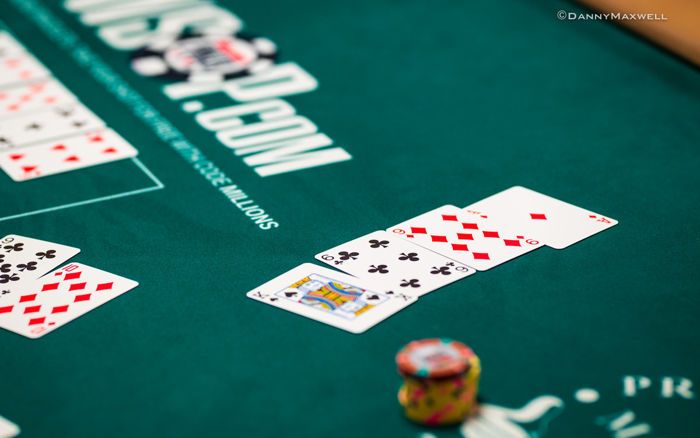
How to Play Pot-limit Omaha at your Home Game - PLO Rules
The rules of pot-limit Omaha are simple but often can be confusing to some players as there are a couple of stark contrasts to no-limit hold’em. When you’re hosting a PLO game, the dealer must keep track of the pot at all times during the hand so that when a player announces a pot-sized bet, the dealer can inform other players how much it will be to make a call.
Always be certain to carefully look over a player’s hand at showdown to ensure the correct player wins the pot. In PLO, unlike NLH, each player must play EXACTLY two hole cards. So if a player is hold 4x5x6x7x8x and the board is 4x4x2xKxKx, they don’t have a full house – they have trip fours and would lose if the other player has a flush or 2x2x in the hole, for example.
Why Play Pot-limit Omaha at your Home Game?
Pot-limit Omaha is great for home games because players love the action. There’s more action in PLO than NLH or really most poker variants because it’s easier to hit a big hand. Your players will love the change of pace.
#9 - Play Stud at your Poker Home Game
Stud is an old-school poker variant that is a great game to add to your mixed games list. It’s especially perfect for home games that have a lot of players that are aged 50 and above, but also played among younger poker players.
What is Stud?
Stud is an iconic form of poker that used to be the standard game back in the days. Each player is dealt two cards face-down and one face-up. The dealer then gives each player an individual card face-up (fourth street), followed by another face-up card (fifth street), and one last face-up card (sixth street) before dealing each player a final card (seventh street) which is face-down.
During each street, there is a round of betting. After the final card is dealt and final round of betting concludes, the player with the best five-card poker hand wins the pot. Stud games are almost always played in the limit betting format.
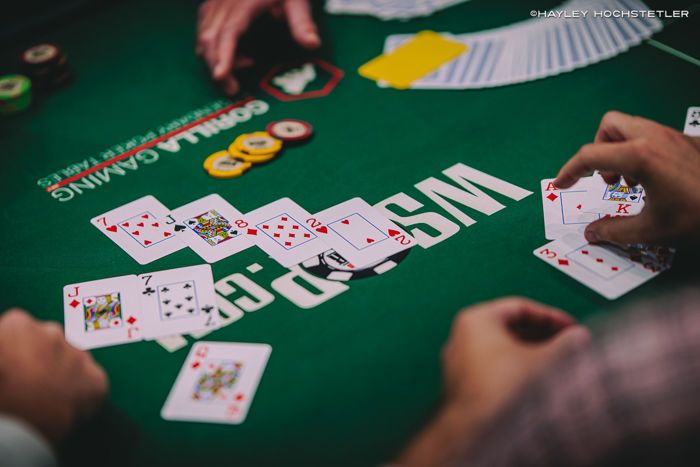
How to Play Stud at your Home Game - Stud Poker Rules
Stud is much different than hold’em and is dealt in a different manner. The only real similarity is the first two cards are dealt face-down clockwise around the table to each player. After that, it’s almost like a whole new poker game.
The next step is to deal each player their own card face-up. Then you begin the round of betting after the player with the lowest face-up card puts in the bring in, and then the betting action in the hand moves clockwise from there. There are no blinds in stud, only bring in’s and antes.
Why Play Stud at your Home Game?
Stud is a great change of pace and addition to any mixed game lineup. It’s also extremely popular among the 50+ crowd. But that doesn’t mean younger players don’t enjoy it as well. There’s a large segment of the poker community that enjoys mixed games, and stud is one of the most popular variants.
#8 - Play Razz at your Poker Home Game
Razz is more popular than you might think! With that in mind, it’s one of the best additions to a mixed game lineup and is a ton of fun to play.
What is Razz?
Razz is essentially the inverse of stud. The format in razz is exactly the same as stud, but the difference is that the winner is the player with the lowest hand possible (excluding straights). Ace is low, which means the A-2-3-4-5 is the stone-cold nuts.
It’s a great game that requires players to not only play their own hand but also take into consideration the face-up cards their opponents are showing.
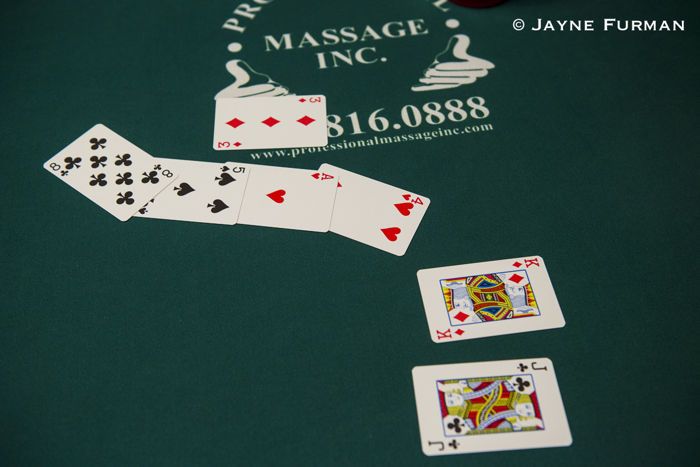
How to Play Razz at your Home Game - Razz Poker Rules
The game of razz is dealt exactly like stud (see above for details). It’s an ante/bring in only game and there are no blinds. The dealer should start things out by dealing two face-down cards to each player and then one card face-up to everyone at the table.
The player with the highest card (king) must pay the bring in and every player will ante before the hand is dealt. After the initial three cards are dealt, there’s a round of betting, followed by one face-up card to each player and a round of betting up through seventh street.
Why Play Razz at your Home Game?
Why not!? It’s a really fun game that players of all ages will enjoy. It helps spice things up a bit to keep your players from getting bored playing no-limit hold’em exclusively. It’s also a game of skill that requires a ton of bluffing to win.
#7 - Play PLO8 (Hi/Lo) at your Poker Home Game
Pot-limit Omaha 8-or-better (or hi-lo) is one of the most popular mixed games around, which makes it perfect to add to your poker home game.
What is PLO8 (Hi/Lo)?
Pot-limit Omaha hi-lo (or 8-or-better) is a variation of standard pot-limit Omaha. The difference in this version is that there is a “low” component and often times multiple players will win or split the pot.
Players are dealt four cards and attempt to make both a high and low hand. The low hand is in play when there are three cards on the board 8 or lower and a player is holding two cards in their hand that are valued at 2-8.
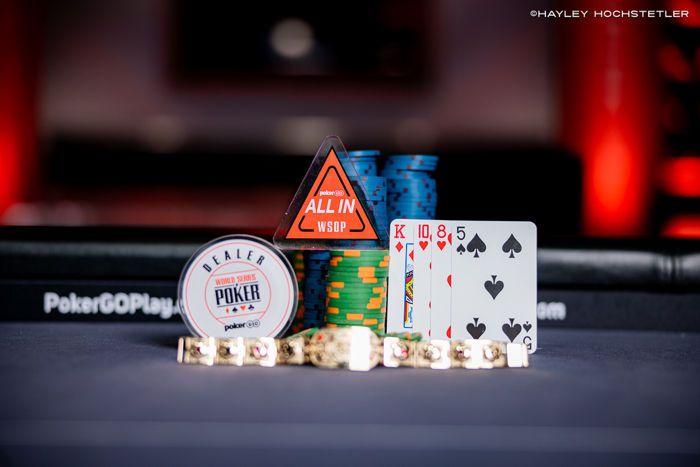
How to Play PLO8 (Hi/Lo) at your Home Game - PLO8 Poker Rules
You play PLO8 at your home game just the same as PLO in terms of betting structure and dealing five community cards. But there is a low hand in play often. If one player has the best high hand and another has the best low hand, they will split the pot.
So, when you’re dealing the hand, make sure to evenly split the pot if there are multiple winners.
Why Play PLO8 (Hi/Lo) at your Home Game?
The reason you should incorporate some PLO8 into your home game is because it will go over well with many of your players. The game is becoming increasingly more popular in recent years, and there’s no doubt that it will be a hit in your poker game.
#6 - Play Single Draw at your Poker Home Game
Draw poker is an old-school variant, but it’s still an exciting game that is well liked among many different types of poker players.
What is Single Draw?
Single draw is one of the simplest forms of poker, but also one of the toughest types of poker to make a big hand. The game is easy to learn, easy to play, and also fun and can create some great action and table talk in your home game.
So, here’s how it works: every player is dealt five cards face-down. Based on the strength of their hand at the time, they bet on how confident they are in their hand. After that round of betting concludes, the remaining players in the hand then draw as many cards as they’d like, replacing their old cards with new cards.
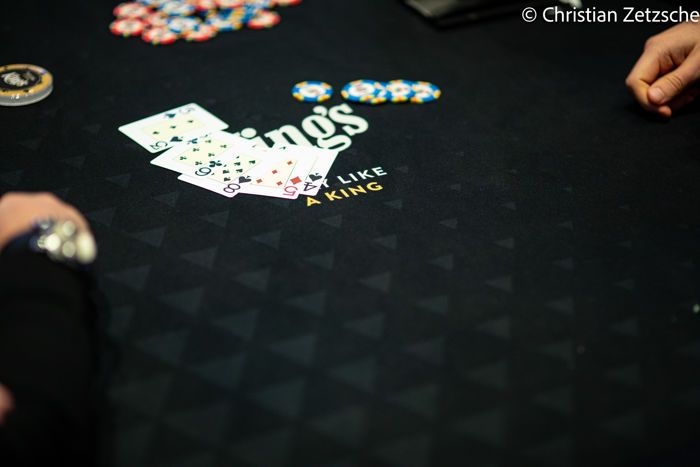
How to Play Single Draw at your Home Game - Single Draw Poker Rules
The game starts by dealing each player five cards. A round of betting then ensues and then every player in then decides how many cards from their starting hand they want to discard. The dealer then hands them new cards to replace the discarded ones.
The dealer position should rotate clockwise throughout the game. One player deals a hand and then passes the deck clockwise to the next player, and so on.
Why Play Single Draw at your Home Game?
The best reason to play single draw is if you have players who enjoy draw games. Why not give them a game they’d enjoy that is a bit out of the norm compared to no-limit Texas hold’em? Keep everyone happy and you’ll keep them coming back for more.
#5 - Play Badugi at your Poker Home Game
Badugi is one of the most fun and entertaining poker games around. For that very reason, this is a great game to have in your game as many of the players will be thrilled to try something new.
What is Badugi?
Badugi is a form of draw poker that isn’t typically spread in casinos unless it is part of a series of mixed games. So, you likely won’t find a badugi game by itself in a casino, and as such, you probably won’t get a big turnout if it’s the only game you have.
That said, many of your players will be glad you included it in the mixed games you host as it is fun and creates a ton of action. Badugi is a draw poker game where players are attempting to make the lowest four-card hand without matching suits. It can also be a frustrating game when the draws aren’t going your way.
How to Play Badugi at your Home Game - Badugi Poker Rules
Badugi is one of the easiest games to learn, but also one of the most frustrating. Every player is dealt four cards face-down and there are small and big blinds in what is traditionally a fixed limit game. They then decide if they’re in or out during the first round of betting.
After the initial round of betting, players discard 0-4 cards and have those cards replaced by cards from the deck. Then another round of betting. There are a total of three draws in this game. At the end, players show their cards and the lowest hand wins. Ace is the lowest card in the deck. Pairs and double-suited cards are not good hands. A-2-3-5 with all four suits is the best badugi hand possible.
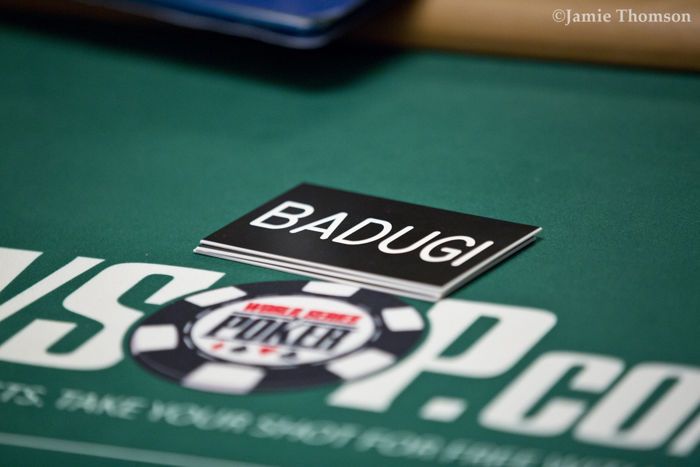
Why Play Badugi at your Home Game?
Badugi is yet another fun form of poker that is outside the no-limit hold’em norm. Thus, it’s a solid poker variant to have in your home game as the players will have a good time playing it.
#4 - Play 3-Card Guts at your Poker Home Game
Looking to try a little something different and think outside the box for your next poker home game? Then you absolutely should give 3-card guts a shot and see how your players respond to the game.
What is 3-Card Guts?
Three-card guts, also referred to as Monte Carlo, is a unique card game that is easy to learn and can be highly profitable once you pick up the basics. But the game is very much different than traditional forms of poker such as no-limit hold’em and stud.
Players are only dealt three cards, which means the standard monster hands in poker such as four of a kind and full house are not in play. But you can still make straights and flushes, except they are only three-card straights/flushes.
So, if you’re dealt 3-4-5, that would be a straight. If you have 7-10-J, all of diamonds, that is a flush in three-card guts. It’s a really fun game to play in a home game and most of your players have probably never even heard of it, but they’ll be glad to learn something new.
How to Play 3-Card Guts at your Home Game - 3-Card Guts Poker Rules
Three cards are dealt to each player in three-card guts to start the hand. Beginning in sequence after the dealer, players then call “in” or “out” depending on the strength of their hand..
Players who call in, without any kind of draw or betting round, throw down their three-card hands. The player who called in with the best hand at the table wins the pot, while the others who called in match the pot. The game is re-dealt, where it ends when one player calls in.
The name “guts” truly does match the style of play in three-card guts as it takes guts to call “in” without knowing the cards your opponents are holding.
Why Play 3-Card Guts at your Home Game?
Much like some other games on this list, the use of a game like three-card guts in any home game is to spice things up a bit and give your players a little something extra to play once in a while.
Additional Poker Home Games Reading...
- The Best Poker Cards for your Poker Home Game
- Best Poker Tables for your Home Game
- Betting Structure, Blinds and Rules for Your Poker Home Game
- How to Setup the Table for your Poker Home Game
- How to Shuffle and Deal in a Poker Home Game
- Best Poker Chips set for Home Games
- Poker Home Games Strategy – How To Win
- The Best Snacks, Foods and Drinks for your Poker Home Game
- Top 5 Best Poker Gadgets you NEED for you next Poker Home Game
- How to Play Strip Poker
#3 - Play Irish Poker at your Poker Home Game
Irish poker is yet another exciting non-traditional poker variant that you should ask your players if they’d like to play. Chances are they’ll say yes.
What is Irish Poker?
Irish poker mixes the fun and excitement of Texas hold’em with pot-limit Omaha. Everyone starts with four hole cards, which are face-down, just like in PLO. But those who remain in the hand until the flop will discard two cards and play out the rest of the hand like a traditional Texas hold’em game.
There’s also a drinking version of Irish poker, which we won’t get into here, but if you have a rowdy crew at your home game, we certainly won’t stop you or talk you out of playing that wild card game.
How to Play Irish Poker at your Home Game - Irish Poker Poker Rules
As mentioned above, Irish poker is a mix of Texas hold’em and pot-limit Omaha. The hand begins when the dealer deals four cards to each player. The players then decide if they want to play their hand or fold.
Those who opted to play will then see a flop of three community cards face-up. At this point, players decide which two cards in their hand they want to keep and which two cards they want to discard along with a second round of betting. The next community card (the turn) is deal following a round of betting, and then a fifth community card (the river) is placed on the table with the final round of betting. After the action concludes, the player who turns over the best hold’em hand will take down the pot.
Why Play Irish Poker at your Home Game?
Why play Irish poker at your home game? No-limit hold’em and pot-limit Omaha are the two most popular poker variants. Irish poker mixes the two games into one exciting game. There’s your answer.
#2 - Play Omajack at your Poker Home Game
Are you looking for a poker game that is out of the ordinary and will give your players an opportunity to learn something new? Then Omajack is the perfect game for your next poker night.
What is Omajack?
Omajack is a combination of pot-limit Omaha and blackjack, so you’ll want to be sure the players in your game also enjoy blackjack if you’re going to host this game. You likely won’t see Omajack played in a home game unless it is part of a series of other mixed games.
With that in mind, the game has a PLO component and a blackjack component, and often there will be split pots among the winner of the PLO part and the blackjack part. Further details about how the game is played are mentioned in the following section.
How to Play Omajack at your Home Game - Omajack Poker Rules
An Omajack hand starts out just like a pot-limit Omaha hand, except one major difference — . players are dealt five cards face-down, not four, and attempt to make the best possible poker hand from the following five community cards. You must use exactly two hole cards and three community cards to make a five-card PLO hand.
That part of the game is the same, but there’s a second component to Omajack that you must understand. So, how does blackjack factor in to Omajack? After playing your PLO hand, you will have three cards remaining in your hand. Those three cards are used to make a blackjack (21) hand. The player with the best three-card blackjack hand will take half the pot and the best PLO hand gets the other half.
Why Play Omajack at your Home Game?
If you’re looking to play some other casino games beyond poker along with some pot-limit Omaha, Omajack should be your game of choice. It’s also something out of the ordinary, which mixed game players tend to love.
#1 - Play Pineapple at your Poker Home Game
Pineapple is a cool version of poker, but as you’re about to learn, it is a similar game to no-limit Texas hold’em in many ways.
What is Pineapple?
Pineapple has many similarities to Texas hold’em, and it is popular among hold’em players because it gives them an opportunity to play a unique version of their favorite game. Right off the bat, the biggest difference is that each player is dealt three cards face-down in Pineapple, as opposed to two in hold’em.
The second difference is that players will discard one card during the preflop action in Pineapple, which is something that doesn’t occur in Texas hold’em.
How to Play Pineapple at your Home Game - Pineapple Poker Rules
Dealing Pineapple in your home game is simple, and the game is easy to learn for anyone who has ever played no-limit Texas hold’em. First off, the dealer will deal three cards face-down to each player.
The players then look at their cards and decide if they want to continue in the hand or not just like in hold’em. After that preflop round of betting occurs, each remaining player in the hand discards one chosen card, leaving them with two cards.
From there on out, the hand plays out exactly like in Texas hold’em, with five community cards (flop, turn, river) being spread and three additional rounds of betting. At the end of the betting rounds, the player with the best possible five-card poker hand wins the pot.
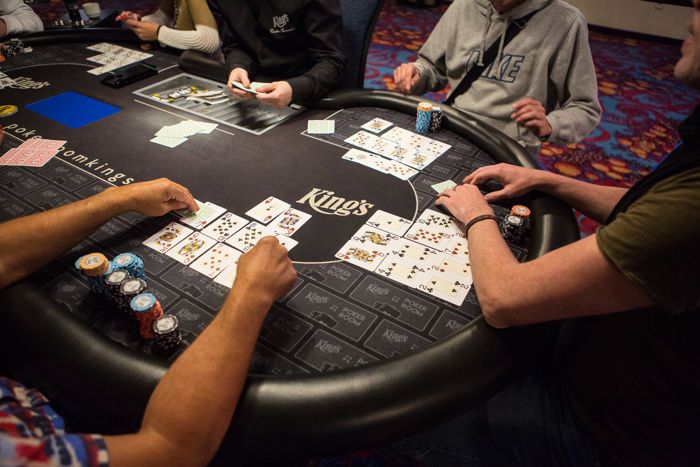
Why Play Pineapple at your Home Game?
Pineapple, as you’ve learned, is so much different from any other poker game other than Texas hold’em (stud, PLO, etc.), and that is one of the top reasons you should implement it into your poker night at least once in a while. Try something new from time to time and you won’t have any problem getting your players to return to the game on a weekly basis.
Top 5 Poker Rules to Improve your Poker Home Game
Abiding by certain unwritten rules of poker home games is essential to running a successful game week after week.
- #5 - Straddle in your Poker Home Game
- #4 - Button Ante Rule
- #3 - Deuces Wild Rule
- #2 - Bomb Pot Rule
- #1 - 2-7 Punisher Rule
#5 - Straddle in your Poker Home Game
The straddle is something that pros and recreational players like as it helps to spice up the action in an otherwise slow game.
What is a Straddle?
The straddle is essentially an extra blind, typically double the size of the big blind. Most of the time, the straddle is placed one spot to the left of the big blind, but some games allow for the straddle on the button or other positions. Either way, the straddle is the last player to act preflop in Texas hold’em.
How Does a Straddle Work in Poker?
It’s simple to understand how a straddle works in poker. Just think of it as an extra big blind that is twice the size of the real big blind. The player who is straddling is last to act preflop, regardless of the position of the straddler.
So, here’s how it works. The person straddling puts out chips before the cards are dealt just like the blinds do. The amount of the straddle then becomes the minimum bet to call for other players in the hand. So if your game is $1/$2, it would become $4 to call or a minimum of $8 to raise if the straddle is on.
Why Implement a Straddle in your Poker Home Game?
The real reason to implement a straddle in your poker home game is to increase the action at the table. Perhaps, the game is slow and players aren’t raising enough or the pots aren’t big enough. Often times, a player who is frustrated that the game is dull will ask everyone at the table to straddle so that the action will pick up.
#4 - Button Ante Rule
The button ante rule is the same as the big blind ante format except the ante comes from the button, not the big blind.
What is the Button Ante Rule?
The button ante rule simply requires the player who is seated with the button out in front of them to place one single ante to cover the entire table. In traditional poker games, every player would make a small ante before each hand. But the button ante rule requires only one big ante from the player on the button.
How Does the Button Ante Rule Work in Poker?
The button ante rules works simply by requiring the button to place an ante before the hand is dealt, and only the button – no other players. This differs greatly from the old-school poker games that require small antes each hand from every player in the game.
The purpose of the button ante is to speed up the action. If you’ve ever played traditional games with antes, you know how frustrating it can be to wait for everyone to post an ante. It slows down the game. But with the button ante format, only one player antes, which makes for a faster pace of play, something everyone will enjoy.
Why Implement the Button Ante Rule in your Poker Home Game?
The main reason to implement the button ante into your poker home game is to speed things up a bit. It’s just one player posting an ante as opposed to everyone at the table, which simply makes for a faster pace of play. That’s a good thing for your game as it will ensure players are satisfied with the game.
#3 - Deuces Wild Rule
Implementing the deuces wild rule in your poker home game will spice it up a bit and create some intense fun action at the table.
What is the Dueces Wild Rule?
The deuces wild rule is exactly as it sounds – deuces are wild. So if you have a deuce in your hand, it is the most valuable possible card as it can be played to help you hit a monster hand.
How Does the Deuces Wild Rule Work in Poker?
The deuce is truly wild in deuces wild poker. What this means is if you have a deuce, or multiple deuces, in your hand, you can use that card to help you make a big hand.
For example, let’s say you’re dealt 5-2 and the flop comes out 5-5-6. You would actually have four of a kind in this scenario since your 2 could be played as a 5 since it is wild. This makes for some great action that spices up the game and creates a fun atmosphere. Everyone loves a juicy poker game.
Why Implement the Dueces Wild Rule in your Poker Home Game?
There are many reasons to implement the deuces wild game into your poker home game night, but the main reason is because it creates some extra action. You should always be looking for ways to spice up your games so that they don’t become stale and scare players away.
#2 - Bomb Pot Rule
Bomb pots are somewhat new to poker and they make any game more fun and exciting.
What is the Bomb Pot Rule?
Bomb pots create juicy action as they require every player in the game to enter the pot. Bomb pots typically occur in no-limit hold’em or pot-limit Omaha games. Every player puts in a set amount before the flop and then the dealer spreads out the flop, which is where the betting action begins to take place.
How Does the Bomb Pot Rule Work in Poker?
When a bomb pot is announced, every player puts in an ante amount that is predetermined. In a $1/$2 game, for example, the amount would likely be about $10, but that’s up to the game host.
There is no preflop action when a bomb pot is on. The money goes in the middle and then the dealer turns over the flop. At this point, the game continues normally with betting action on the flop and then the turn and river just like a normal poker hand.
Bomb pots are fun to play but it is difficult to put another player on a hand given there is no preflop action to gain information from. It’s often best to fold some strong hands that aren’t monsters because chances are someone flopped a big hand.
Why Implement the Bomb Pot Rule in your Poker Home Game?
You should add the bomb pot to your home game as it makes the game more lively and increases the action. But don’t do bomb pots too often as they can get to be expensive, which will scare some of your recreational players away.
2-7 Punisher Rule
The 2-7 Punisher Rule sounds intense. Truth be told, it is intense - that's why it's first on the list. Implementing the 2-7 Punisher Rule to your home game will drive more action and increase the excitement of the game tenfold.
What is the 2-7 Punisher Rule?
Like other rules on this list, the 2-7 Punisher Rule brings more action and drama to your home game. It is essentially where any player winning with the 2-7 hand wins a bonus from all players. However, the winning player must win the pot to win the bonus, simply getting to showdown and losing is not sufficient.
How Does the 2-7 Punisher Rule Work in Poker?
This rule can vary depending on the game. The most common way the 2-7 Punisher Rule works, though, is that if a player wins with that hand, all other players will pay them a pre-determined amount of big blinds. Sometimes, this is just one big blind from each player, other times it's five, but if you want to up the ante you can make it as many big blinds as you like - as long as all players previously agreed.
Why Implement the 2-7 Punisher Rule in your Poker Home Game?
As you can imagine, introducing the 2-7 Punisher Rule to your home game can cause all-out chaos - in a good way. With a bonus applied to that hand, people will play it like it's aces. So, you have to decide if they're simply trying to steal the win with 2-7 or if they're actually strong. It adds a new element that changes the dynamics of the play without steering it to far away from the fundamental game of no-limit hold'em poker.
Here's everything you need to host a variety of poker home games!
| Poker Product | Necessity | Our Choice On Amazon |
|---|---|---|
| Poker Chip Set | Must Have A♦ | Buy Now |
| 2 x Proper Playing Cards | Must Have A♠ | Buy Now |
| Poker Table Felt | Must Have A♣ | Buy Now |
| Pro Poker Table | Nice to have K♥ | Buy Now |
| Funny Sunglasses | Just for Fun Q♦ | Buy Now |
| Poker Whiskey Glasses | Just for Fun Q♠ | Buy Now |
| I don't fold T-shirt | Just for Fun Q♣ | Buy Now |
| Poker Rap Star Chain | For Ballers J♥ | Buy Now |
Poker Variants for Home Games FAQs
How many poker variations are there?
There are hundreds of different poker games out there.
Which poker variant is best?
No-limit Texas hold’em is the most popular poker variant, but pot-limit Omaha and other non-NLH games are also a ton of fun to play.
What is the hardest poker variant?
That’s hard to say as it depends on individual skillsets, but no-limit hold’em is likely the most complicated game.
What is the most popular form of poker?
No-limit Texas hold’em is the most popular poker variant by a wide margin. That’s why you see it on TV almost exclusively.
Can I add new rules to poker?
It’s your game, you can make the rules so long as your players have no issue with them.
How can I make poker more fun?
By adding different variants of poker to your home game and bringing fun players to the game.
How can I spice up my poker night?
You can spice things up on your next poker night by adding in some mixed games instead of exclusively playing no-limit hold’em.
What is the 80 20 rule poker?
The 80-20 rule implies that 80% of your results are driven from 20% of things you do.
